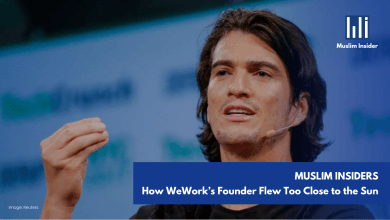
Paul Graham, co-founder of the startup accelerator Y Combinator, recently attended a YC event last week. The talk from Brian Chesky, CEO of Airbnb, has sparked a specific question that the talk brought to his mind. In his essay, he talks about how founder mode works differently than manager mode. He argue that founder should maintain direct involvement in their companies, emphasizing startups. According to him, traditional management advice often leads to disastrous outcomes.
Founder Mode Vs. Manager Mode: What’s the Difference?
Paul Graham finds that people have been telling the founders advice that should not have been told—how to run a company you didn’t find. For him, that is what a professional manager typically does. This advice is totally not useful to founders who need guidance on building and growing a company from the ground up. Essentially, they were receiving advice on how to manage, not how to find and build, which is why Paul Graham found it troublesome.
Founder Mode
Paul Graham has still not figured out what the founder mode is going to look like, since it has not really been found anywhere. Instead, he gives a brief view on what a founder mode might be like. Typically, CEO is meant to engage with the people in the company through direct reports. Paul moves away from these traditional constraints and suggests that in this mode, founders:
- Make “skip-level” meetings a norm. CEO engages directly with employees or who are not their direct reports.
- Maintain direct involvement and oversight in the company
- Use their deep understanding of the business for important decisions.
- Allows for flexibility and responsiveness to the company’s needs
- Engage directly with key decision-makers, bypassing traditional management hierarchies
Manager Mode
Paul compares traditional management to modular design, where a manager set goals for their team but lets the team handle the details of how to achieve those goals, avoiding micromanagement. Therefore, to him, managers:
- Set clear goals and communicate them to the team.
- Guide and support the team without controlling every detail.
- Let team members decide how to achieve goals and handle tasks.
- Monitor progress and results, not the details of how work is done.
- Provide the necessary tools, information, and support for effective task completion.
Why Founder Mode Works Better in Startups

Founder mode is effective in startups because it fosters creativity and aligns with the company’s original vision. Founders start by managing their startups hands-on. As the company grows, they must delegate responsibilities and give others more autonomy. The extent of this delegation and autonomy changes over time as managers earn trust. “Founder mode will be more complicated than manager mode. But it will also work better,” according to Paul.
Airbnb Success
Paul Graham explained that Brian Chesky’s talk challenged the traditional advice given to leaders of growing companies. The old wisdom suggests that to scale a company, you should “hire good people and give them room to do their jobs.” However, when Chesky followed this advice, it led to poor results. He realized that this approach didn’t work for Airbnb, so he had to find a better method on his own. Chesky studied Steve Jobs’ management style at Apple and applied what he learned. This new approach has been successful, as evidenced by Airbnb’s strong financial performance.
Steve Jobs Sets Example for Founder Mode

Steve Jobs’ approach to leadership serves as an example of this Founder Mode leadership. This style involves staying deeply involved in the creative and strategic aspects of a company, even as it scales. Jobs was known for his hands-on involvement in product development and innovation at Apple, rather than just focusing on traditional management tasks.
Another way that Steve Jobs runs his company is by doing an annual retreat of 100 important people at Apple. This method is just like how it works on startups, but a big company like Apple is doing it. While Paul is not sure if this idea may work, the fact that Steve Jobs didn’t eliminate this annual retreat may suggest that it is working.
Challenging Assumption: “Founders Need to Transform From Builder to Manager as Startup Grows”
Paul suggests this assumption might be wrong. Many founders feel frustrated when they switch to manager mode. Some succeed by staying involved in the creative side instead of just managing. This shows there might be a better way to scale a startup. Founders could benefit from staying engaged in the creative and strategic aspects of their business as it grows.
His Concerns
Paul Graham is concerned that once the concept of “founder mode” becomes popular, it might be misused. Specifically:
- Founders Misusing the Concept: Some founders who struggle with delegating tasks might use “founder mode” as an excuse to avoid delegating responsibilities that they should be handing off. They might justify not sharing their workload by claiming it’s part of their unique approach.
- Non-Founders Act Like Founders: Managers who are not founders might try to adopt a founder’s approach in their roles. While this might sometimes work, it often leads to messy outcomes because they might not fully understand or implement the founder’s mindset effectively.
- Steve Jobs’ Retreats: Jobs held annual retreats for the 100 most important people at Apple, not necessarily the highest-ranking on the organization chart. If such retreats become common in established companies dominated by politics, it might signal a decline or issues within those companies.
Conclusions
Paul Graham challenges the traditional management advice often given to founders. He argues the “founder mode” of deeply involved, hands-on leadership can be more effective than the “manager mode” of setting goals and delegating tasks. While he believes founder mode can be more effective as startups scale, he acknowledges it may be more complicated than manager mode. He expresses concerns the concept could be misused by founders reluctant to delegate or by non-founders trying to emulate a founder’s hands-on style without fully understanding it. Overall, he challenges the assumption founders must transform from builders to managers as their companies grow. He suggests founders may be better served by staying deeply involved in the creative and strategic aspects of their businesses, even as they scale. This founder mode, while more complex, can lead to better outcomes.





